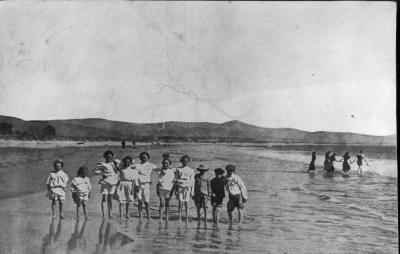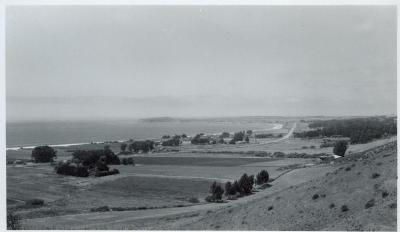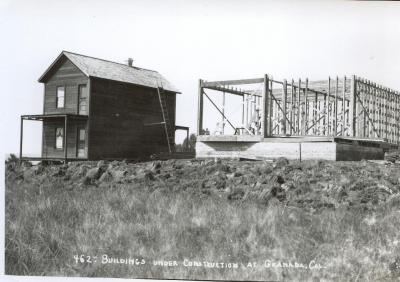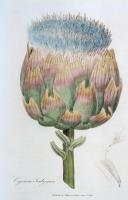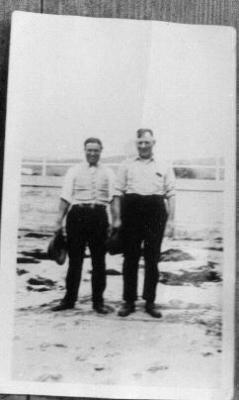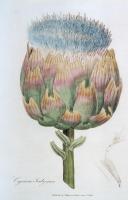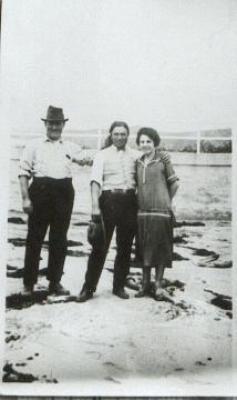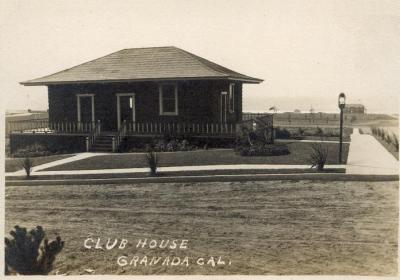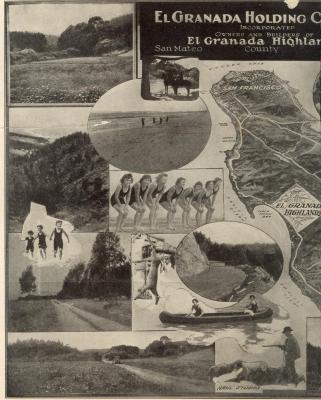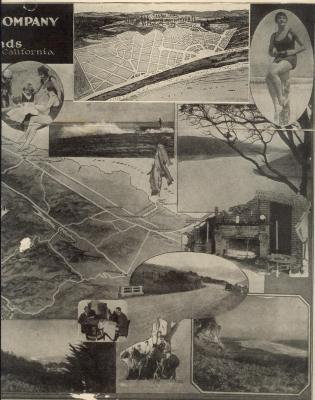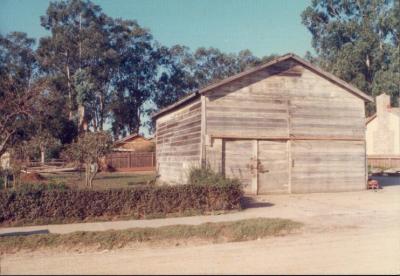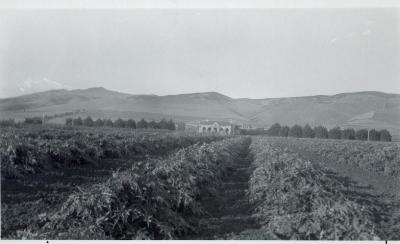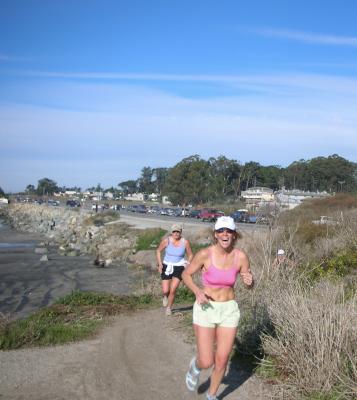The Hwy 1 Era
Three decades after the Ocean Shore Railroad declared bankruptcy and pulled out of the Coastside, the train’s right-of-way was paved over with a new road, eventually called Hwy 1. The paving occured in stages up and down the Coastisde, between the 1940s and 50s.
This R. Guy Smith photo could have been taken in the early 1950s–when development was taking place on “the other side of the hill” but not on the Coastside, still wide open. In this picture it seems the Ocean Shore left us little to remember it with. But if you look closely some landmarks are visible such as the old Amesport Pier (1860s, rebuilt 1916) at Miramar. That’s Pillar Point to the north.
Notice there’s no traffic? What’d they do, close the highway so the photographer, R. Guy Smith, could get the shot? Nice.
El Granada Vignette
(At below,right) About 1908, the Ocean Shore Railroad (smoky, isn’t it?) delivers and picks up well-dressed pasengers at an El Granada train station. 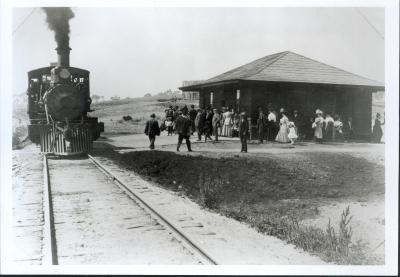
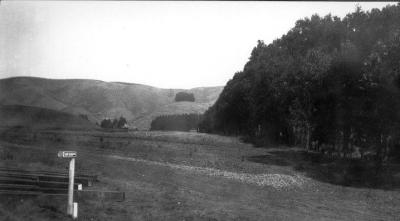 (At below, left) The Ocean Shore ignites a “land boom” in El Granada, and, where once artichokes grew, street signs appear–but no sidewalks or houses–yet.
(At below, left) The Ocean Shore ignites a “land boom” in El Granada, and, where once artichokes grew, street signs appear–but no sidewalks or houses–yet.
While waiting for houses, summer and all-year-round to be built, new lot owners camped out in tents like the one below at El Granada: 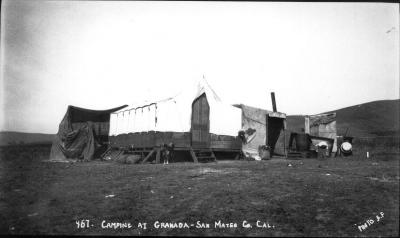
Dante Dianda: The Artichoke King
Good Morning Christmas Eve –Surfer Chicks At El Granada Beach
Landmark Stands in El Granada
Look at this photo closely….the picture tells quite a story. It’s called the “Club House” in this shot by master Coastside photographer R. Guy Smith, but it originally served as a second Ocean Shore Railroad Station in El Granada. El Granada was the Ocean Shore’s “jewel” in its pearly necklace of beach towns, and what better sign of this exalted status than the unusual circular street layout for the resort, mostly in the flatlands–a layout that was to include beds of beautiful flowers in the center dividers now filled instead (mostly) with towering Eucalyptus trees.
To the right of the former railroad station, now a charming private residence (home of Jimmy Boyle, drywall specialist), there’s a concrete sidewalk, perhaps one of the few in El Granada at the time, that’s what it looks like.
And, to the west, is that the bathhouse overlooking the Pacific? There’s a pix of the bathhouse at El Granada in a previous post. Did you know there’s a search engine at the bottom on the right of this page? If you punch in a word or words and it’s mentioned in one of my posts the search function will find it.
The railroad went bankrupt about 1920 so the photo was taken afterwards. (I think the station was moved to the east from its original position.) But there’s not much action–no people, no cars. One slice of sidewalk, a bathhouse, a lost dream?
(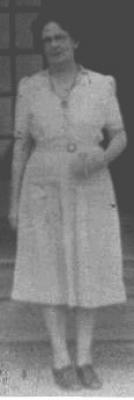 At left, Maymie Cowley, the Coastside’s Madam)
At left, Maymie Cowley, the Coastside’s Madam)
Or is that building to the west actually the El Granada Hotel (part of which is also still standing, not the tall part, but the little cottages that were in back). The El Granada Hotel must have been the sole basis of the economy in El Granada–built by Maymie Cowley, a hardened madam from the Mid-West and occupied by “just passing through” hookers while she and her friends killed the time playing poker in the undependable light of the hotel lobby (legend has it that clever Maymie plugged the plug on the light so she could have a winning hand)
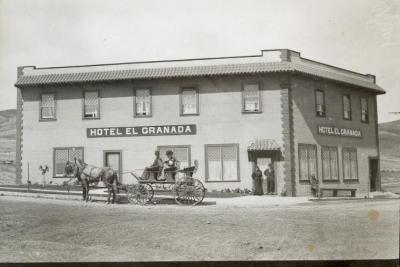 A very early photo of El Granada Hotel, circa 1908. I put Maymie in there later, during Prohibition, when she also operated the more famous roadhouse today known as The Miramar Beach Inn. Photo Randolph Brandt.
A very early photo of El Granada Hotel, circa 1908. I put Maymie in there later, during Prohibition, when she also operated the more famous roadhouse today known as The Miramar Beach Inn. Photo Randolph Brandt.
There were lots of streets with cracked sidewalks and ghostly sidewalks that went no where when I first came to the Coastside. It was these sidewalks that spoke to me and told me there were colorful stories to unearth. And there are– but they still haven’t all been told, have they? What a gorgeous and mysterious place we’re lucky enough to live in.
When you’re on a walk, it might be fun to find the second Ocean Shore Railroad station.

